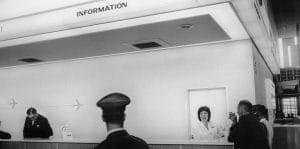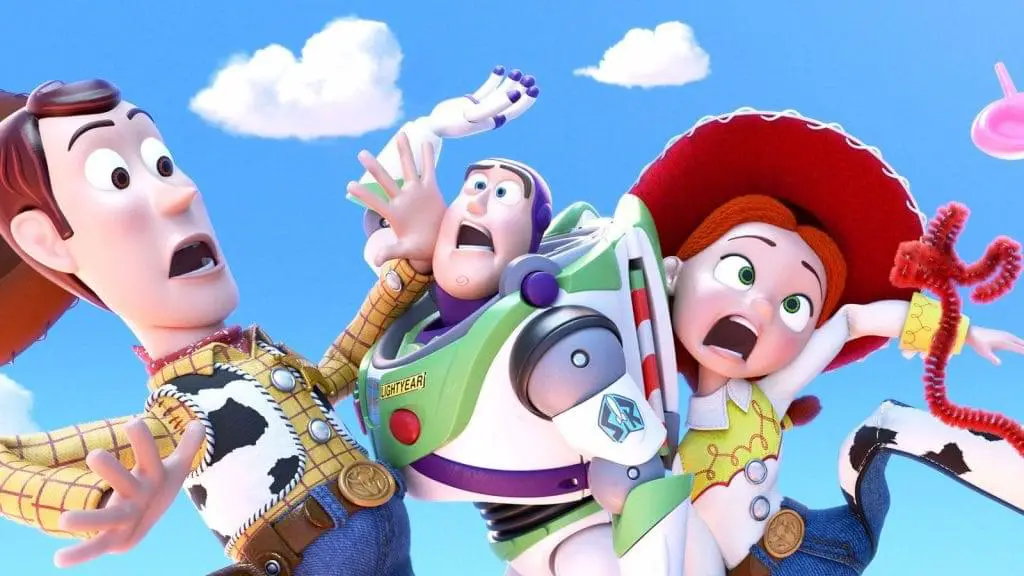
A sumptuous collection of Garry Winogrand’s iconic photos does the storytelling in Sasha Waters Freyer’s documentary Garry Winogrand: All Things Are Photographable. The pictorial biography is informed by interviews with friends, family, colleagues, and recordings of Winogrand himself speaking.
Winogrand had the great fortune to hit his peak in Manhattan in the 1960’s and the photographic rewards of that happy accident are incredible. Everything is elegant, designed, and if not beautiful then beautifully functional. It’s the same period covered in the TV series Mad Men. Waters Fryer Interviews Mad Men creator Matthew Weiner about the influence of Winogrand’s work on his production design for the show.
Winogrand shot in black and white so he could make contact sheets and work prints in his own darkroom. He was prolific, shooting up to 600 rolls of film each year. Near the end of his life he continued to shoot at an obsessive pace and fell behind in developing the images. He died in 1984 with thousands of rolls of undeveloped film in his studio. The art world’s consensus at the time was that his work had declined once he moved to Texas and California in the 1970’s. His friend Thomas Roma suggests that his skill didn’t decline, it was the scenery and the people that did. He says “Nothing is as good as 1964. Nothing. “

“He loved to take pictures of women and said of those images ‘I don’t know if all the women in my photographs are beautiful, but I do know that the women are beautiful in the photographs.’“
Something less worth celebrating is that he was the same kind of sexist as most men in the ’60’s. There were exploitative stag films in his collection. He was very pushy with women. He jokes about grabbing first and getting consent later, or not at all. He loved to take pictures of women and said of those images “I don’t know if all the women in my photographs are beautiful, but I do know that the women are beautiful in the photographs.”
His book Women Are Beautiful is said to contain many brilliant images, but is not respectful in a way that would be in keeping with current standards. He was the male gaze incarnate, wandering Manhattan with a Leica camera during a decade where women refused to wear bras as an act of protest. It’s wrong to judge the past by current standards. Every generation is sure they’ve arrived, finally, at the morals that are definitive for all time. However, empirical evidence is that morality continuously evolves, but this is worth noting in our time of expanding awareness. For women the ’60’s were not the good old days. Waters Freyer shows this part of Winogrand’s life without looking away or making apologies. The images of women he made are as breathtaking as his other work. Despite all, his first wife says she loved him even after their divorce and regrets not having the chance to say goodbye when he died.

“A sumptuous collection of Garry Winogrand’s iconic photos do the storytelling…“
Waters Freyer is an expert on her subject. She is the Chair of the Department of Photography and Film at Virginia Commonwealth University. She studied photography at the University of Michigan and The School of Visual Arts. She was born in Brooklyn. Winogrand was born in the Bronx. They are both New Yorkers in the blood. She chronicles Winogrand through his images, which is an obvious choice, but she achieves a dazzling charm and distinction, curating this collection into an artistic love letter.

“He certainly described the world eloquently with light on surface. “
I am tempted to suggest turning the sound off and enjoying the film with a sixties soundtrack of Monk, Coltrane, and Davis, but you’d miss the narration and the recordings of Winogrand, which beautifully color the details behind the black and white photos he seared onto the world. Winogrand says “All a photograph does is describe light on surface. We are our faces. “ He certainly described the world eloquently with light on surface.
Garry Winogrand: All Things Are Photographable (2018). Directed by Sasha Waters Freyer. Starring Geoff Dyer, Jeffrey Fraenkel, Susan Kismaric. World Premiere at SXSW 2018.
9 out of 10



He was not sexist, he was an early feminist. Women in his pictures are always triumphal, graceful and dignified. Women are goddesses and his photographs are tributes. That was his real attitude.